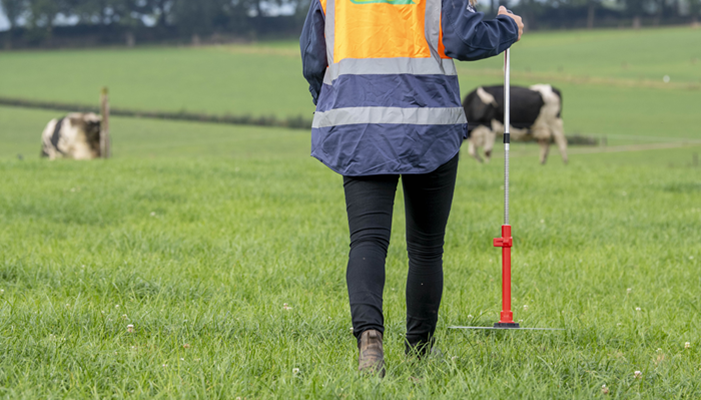Measure performance to drive a reduction in emissions

Using farm records to monitor on-farm performance helps us to drive down our carbon footprint and improve farm profitability, Brendan Smiddy, a Signpost Climate Advisor based in Teagasc Midleton, tells us how.
As we move into the second half of the year, now is a great time to assess mid-season performance on farm and decide, using the data you have, how we can increase farm productivity, sustainability and overall farm profitability. So, what metrics should we look at now to do this?
Grassland management:
- With regular grass walks and measuring, an accurate assessment of grass performance can be quantified. Paddocks with clover content of greater than 20% offer an opportunity to reduce chemical nitrogen application (0 to 50% rate) or replace it completely with dairy washings. Paddocks that have a lower clover content now need to be managed appropriately to increase clover content. If the yield of low content paddocks is low, ear mark them for reseeding next year. If dry matter yield is good, mark them out for oversowing next April.
- Maintain pre-grazing covers of 1,300-1,400 kgs DM / ha across the summer. Results from Moorepark indicate that high quality swards have a lower fibre content and produce more milk and meat. Additionally, ruminants grazing such swards produce less methane emissions, a potent greenhouse gas, because high quality swards have a lower fibre content.
- Measure grass once a week during the main grazing season. Such frequent grass measuring helps to maintain optimum quality and allows you to identify underperforming fields. List the paddocks that are 25% behind the average pasture yield – is the problem a soil fertility or a sward quality one? For example, paddocks that have produced less than 4.5 tonnes of grass dry matter per hectare on 30th June 2025 on a farm with an average grass yield of 6 tonnes dry matter per hectare.
Milk recording:
Use 2025 milk recording data by running the COW report on ICBF now – it will identify cows for culling based on their yield, EBI, somatic cell count and age. The cows identified will also have poorer emissions figures.
Weighing of calves and yearlings:
Regular weighing of young stock provides data to make informed management decisions to ensure optimal growth rates, achievement of target weights and production targets. Maintaining growth rates will reduce slaughter age of beef animals and reduce emissions. Keeping replacement heifers growing rapidly is essential to ensuring that they reach the correct pre-breeding and pre-calving weights, minimises losses to infertility and reduces carbon footprint. Target weight gains of 0.7 to 0.8kgs ADG in calves and 0.9 -1.0 Kgs ADG in yearlings in mid-summer. Animals that are 10% or more below target weight in mid-summer should be managed separately e.g. preferentially feed weanlings weighing less than 150kg where target mid-August liveweight is 165kg.
The Teagasc Signpost Advisory Programme
Brendan Smiddy is a Climate Advisor on the Teagasc Signpost Advisory Programme. The Teagasc Signpost Advisory Programme provides enhanced advisory and training support to farmers to help them to select and implement climate and sustainability actions that are appropriate and impactful on their farms.
